Are you worried about your kid’s curved back? Do you often question whether it will ever go away or will remain this way forever? Don’t worry! We hear you!
Did you know around 40% of patients have thoracolumbar curves in scoliosis, indicating how common this disorder is? The rest of the scoliosis patients either have a lumbar or thoracic curve in their spine.
We know that the stats are scary. But it assures you of one thing at least, you or your kids are not the only ones suffering from scoliosis.
Let’s learn about thoracolumbar scoliosis in a bit more detail!
Thoracolumbar Scoliosis
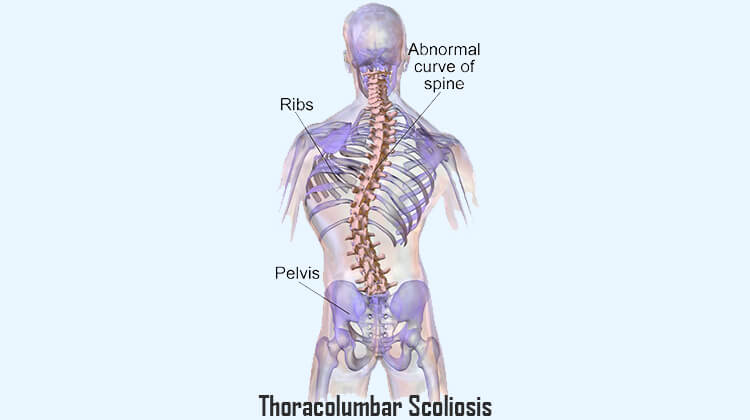
Before we proceed with our discussion on the abnormality of the spine let’s first have a look at the normal anatomy of the spine.
So, the basic spine anatomy has three main regions where maximum movement takes place;
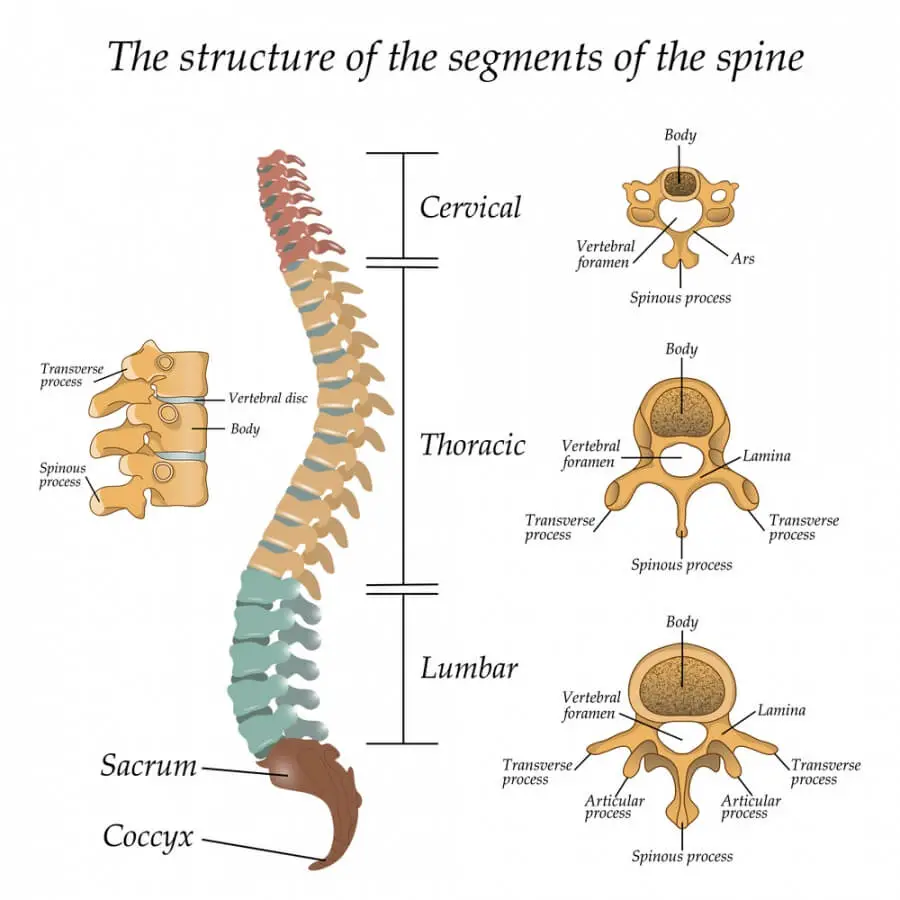
- Cervical – upper
- Thoracic – middle
- Lumbar – lower
Naturally, the spine looks straight from outside except for where the natural curves are located. Any curve other than the five healthy curves in the spine bending towards the right or left side is counted as scoliosis.
So in short, scoliosis is a 3-dimensional appearance of the spine due to an unusual curve in any part but usually involving the mid and low back.
In thoracolumbar scoliosis, the thorax (mid-back) and lumbar (low-back) form an abnormal curve. And most commonly, the curve is towards the right side and is rarely seen in the other (left) direction.
Even though the occurrence of scoliosis is much more common in females than males. However, thoracolumbar and lumbar scoliosis is more common in the male gender. In fact, according to a study, almost 50% of boys with scoliosis have thoracolumbar involvement.
Thoracolumbar Scoliosis Causes
Though we can not say for sure what is the most common cause of thoracolumbar scoliosis. However, most of the time it arises due to an unknown reason.
Let’s discuss the commonest causes of scoliosis.
Idiopathic
The term means unknown. And as we already said, most cases of scoliosis do not have an underlying cause. Hence, they are included in this category.
Congenital
Scientists are now developing new researches to find out the cause of scoliosis and hereditary is one of them. In fact, they now think that most of the cases that were included in the idiopathic type might have a genetic cause.
Plus, there are two ways to inherit congenital scoliosis. You might receive it from your parent’s gene, or develop it on your own during intrauterine life.
Neuromuscular disorders
Spina bifida and cerebral palsy are the two most common types of diseases progressing to scoliosis later in life. Other than these, weak back muscles that stop supporting the spine can also result in scoliosis.
Signs And Symptoms of Thoracolumbar Scoliosis
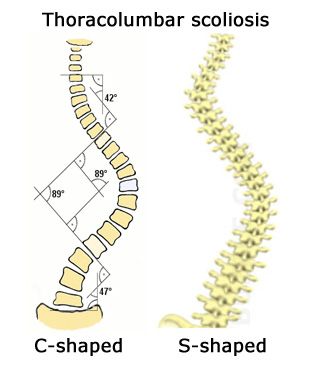
Note: As the spine is bulging out of proportion, it presses upon the nearby organs causing signs and symptoms related to that organ’s function as well.
Thoracolumbar scoliosis is associated with many signs and symptoms. However, these symptoms vary from patient to patient.
- Visible S or C-shaped spine, S-shape back is more common though.
- Pain in the affected site, that is, mid-back and low-back pain.
- The pain arises due to the compressed nerves. And the same cause is responsible for numbness and needle-like sensations in the affected part.
- Uneven shoulder with one drooping downwards while the other is elevated.
- Prominent shoulder blade on one side.
- One hip appears slightly prominent or higher than the other.
- Unequal waist
- In severe curving, there might be a visible difference in the lengths of both legs, where one appears shorter than the other.
- Usually, the lungs get compressed as well, causing difficulty in breathing.
- There is no real resistance in day-to-day chores as long as your back pain is bearable.
Thoracolumbar Scoliosis Diagnosis
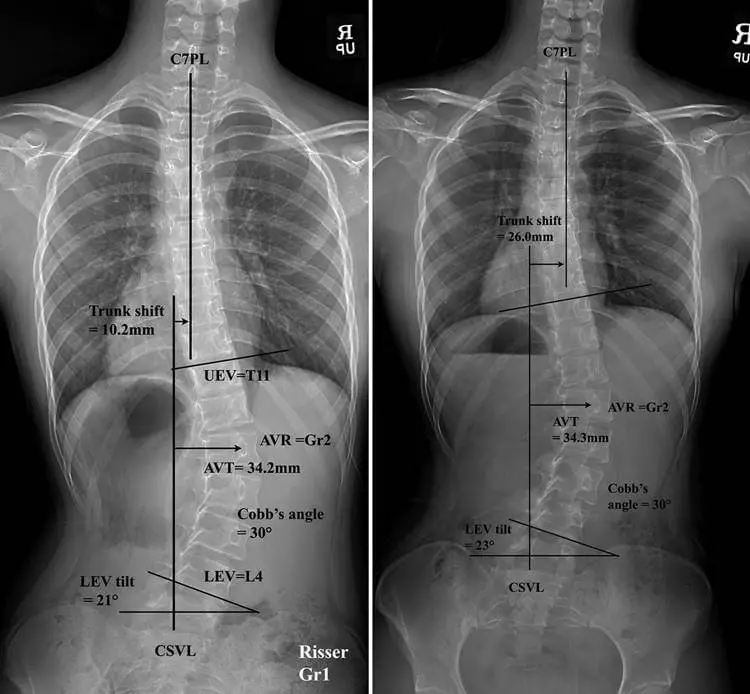
Scoliosis though does not suddenly kill a person but going to the doctor for early diagnosis and treatment is always a better option.
Your doctor will first ask you to bend a little to rule out the 10-degrees bend in the spine. However, to confirm the diagnosis of scoliosis the doctor will suggest an imaging test, that is, an X-ray.
The abnormal spine is clearly visible in an X-ray which will then confirm scoliosis.
Note: If your doctor is suspecting a tumor, he might as well ask you to get an MRI scan done to rule out the tumor as a possible underlying cause of scoliosis.
Thoracolumbar Scoliosis Treatment
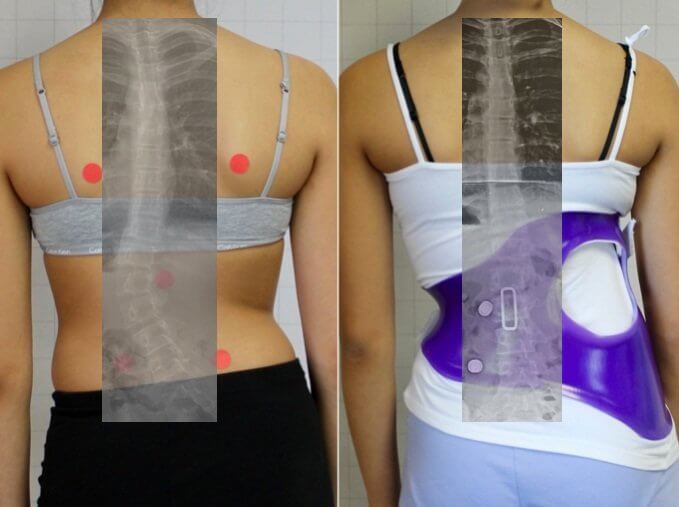
The treatment of scoliosis is different for different people. This variability is mostly due to the 3D nature of scoliosis.
As we already said, the 3D structure means the curve can vary from frontal, sagittal, and transverse plane compressing the surrounding structures.
Similarly, depending upon the situation of a patient, the treatment also varies. The doctors will suggest the best option for your condition.
However, the following are the dependent factors for the treatment of scoliosis:
- The severity of disease and symptoms. It can be mild, moderate, and severe.
- Sex, which includes an increased risk for girls.
- Curve pattern. Whether your curve possesses a C or S-shape, it can impact the treatment choice.
Most commonly, surgery is the best option to treat thoracolumbar scoliosis.
However, in mild to moderate conditions, physical therapy in the presence of an expert also produces good results and you might not need any surgery later.
In the kids whose bones are still growing, back braces have proven to be very effective and completely neglect the need for surgical treatment.
FAQs
Scoliosis surgery is the best treatment option for people of all ages. In some mild cases, physiotherapy works wonders. But that is not a standard way to treat scoliosis.
As the 10+ degree curve makes a 3-dimensional appearance, it rotates the spine into a visibly bent structure, which is the hallmark of scoliosis.
Conclusion
So as you see thoracolumbar scoliosis is very common worldwide affecting people of all ages. However, the causes and severity may vary.
The good news for patients below 10-degree curves is that the exercises usually work. And you might never have to get surgery.
However, it is always good to update your doctor about your condition. Do your back a favor, get the treatment as soon as possible and prevent it from getting weak.
